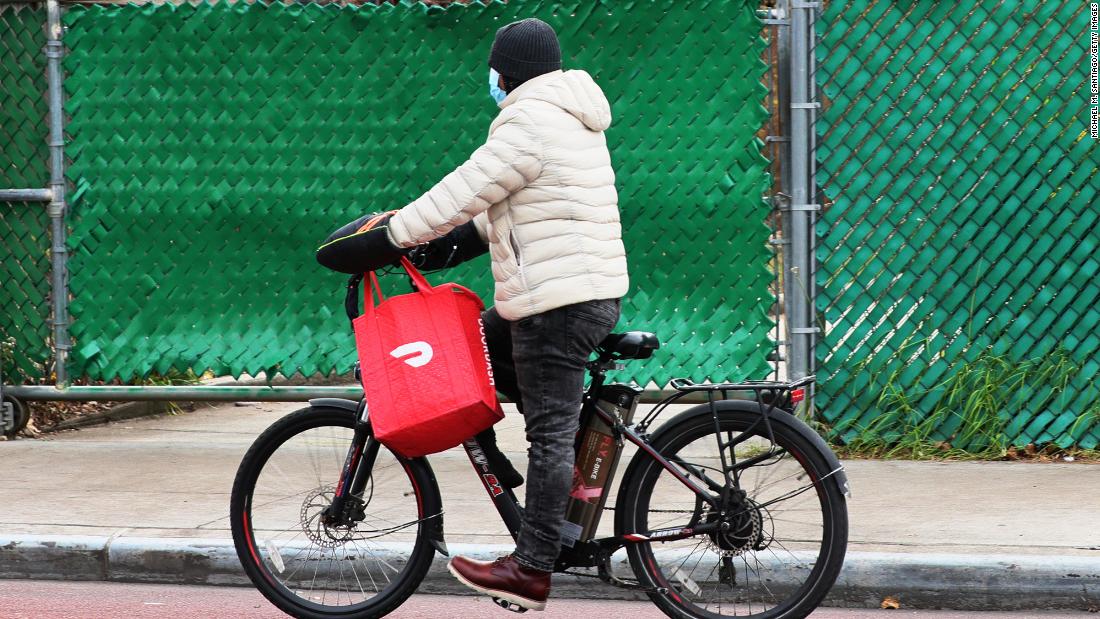The extra charge of about $ 1 to $ 2 was labeled by city. Some people received a “Denver” fee, others a “Chicago” fee.
Across the country, people who placed delivery orders through the service paid more, apparently just for living in those locations.
The real reason for the new fees? In these cities, local governments have approved temporary limits that limit how much third-party delivery platforms can charge restaurants to help distressed businesses. To try to recoup those losses, DoorDash has placed new customer rates in cities that have set limits, including Chicago, Cleveland, Denver, Oakland, Philadelphia, Portland, Seattle, St. Louis and a handful of others. (Customers can find the explanation by clicking on the rate line before placing their orders).
DoorDash is not the only one to add fees. Uber Eats has a similar customer rate in place since the summer in Portland, where the limit is 10% per order.
And in the coming weeks, Uber Eats plans to add fees in more than a dozen markets, including Chicago, Minneapolis, Boston, Washington and Oregon. Fees are $ 2 on average.
Calculation with high commission rates
Before the pandemic, many restaurants avoided third-party delivery services, such as DoorDash, Uber Eats or Grubhub. These platforms can charge commission rates of up to 30% per order, which can leave restaurants in the red.
But now, with dining rooms completely closed or open with limited capacity, many restaurant operators feel they have to offer delivery or go out of business. With less money coming in, the pain of these high commission rates is even greater.
In an effort to help restaurants, several municipalities have set limits on commission rates. Temporary limits, usually around 15%, will eventually expire – in some cases after full indoor meals have been restored for two or three months, in other cases on a specific date. Some cities that have established temporary fee limits have already extended them.
Delivery services have adopted varied approaches to the limits
DoorDash argues that the fees it receives from restaurants cover its own costs. If they can’t get them in restaurants, they’ll have to charge customers, according to the company.
“Operating our platform, paying and insuring Dashers and ensuring high quality service can be expensive, which is why in many markets, where local governments have passed price regulations, we have started to charge customers a small additional fee,” he said. a spokesperson for DoorDash CNN Business in an emailed statement.
Uber echoed a similar sentiment.
“To maintain a reliable delivery market, we are instituting several temporary local rates in certain United States markets,” said an Uber Eats spokesman. “The fees charged by Uber Eats to merchants and consumers on transactions are what fund our services, including app maintenance, customer support, security and – most importantly – payment by delivery personnel.”
Unlike its competitors, Grubhub, which merged with Seamless in 2013, is not adding explicit fees in cities that have set commission limits, according to a company spokesman. Instead, it is using the actions of its rivals to try to attract people to its monthly subscription service, Grubhub +, which costs $ 9.99 a month. In December, he said he would offer three months free to people joining the service in Chicago and New York.
The cost of higher fees
Some restaurant advocates fear that higher rates will drive customers away. “We oppose any additional fees that could potentially dissuade customers from placing their orders,” said Sam Toia, president and CEO of the Illinois Restaurant Association.
There are good reasons to be afraid.
“Consumers are really hesitant to incur any additional fees and costs” in delivery, said Jill Failla, senior food services analyst at Mintel. “Third-party companies need to be really aware of this barrier around consumer rates and need to be very careful about what they are trying to pass on to the consumer.”
This does not mean that they will not charge more for delivery, she said.
For now, some restaurant operators are saying that they have not seen any slowdown in orders because of the new rates.
“I have not seen a significant change in our percentage sale of third parties,” said Ruth Jones, chief financial officer of Maria Empanada, a small Colorado-based chain of empanadas.
Commission limits have been helpful, said Jones. But as soon as they leave, restaurants will once again face these higher commission rates. When that happens, they will have to start charging customers fees themselves. “You are seeing a lot of restaurants adding delivery fees for third party use,” she said. “We have to keep trying to make money as a business, so we have to make choices that make sense for the third party.”
This is especially the case in an environment where restaurants are struggling to survive.
“The recovery of restaurants will require above-average revenue and margin growth for some time and, unfortunately, that will mean some higher prices for consumers,” said David Henkes, senior director at Technomic. “Order delivery is and will continue to be more expensive.”
– Sara O’Brien of CNN Business contributed to this report.
